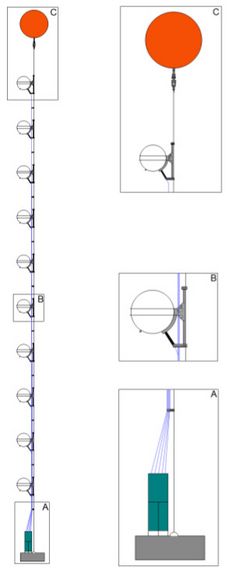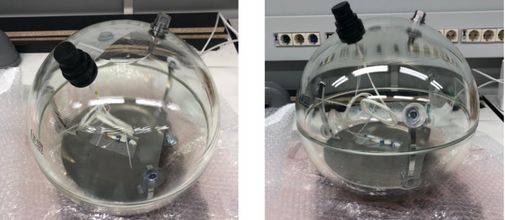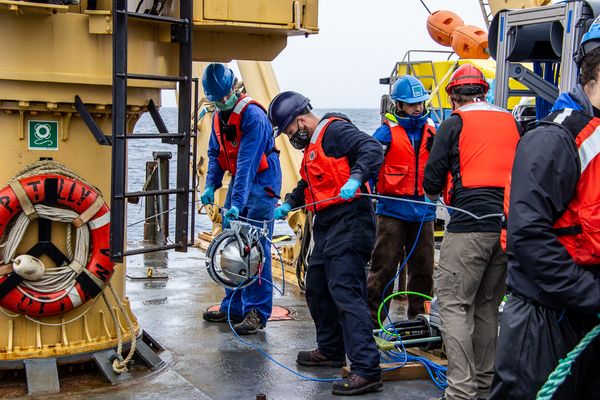P-ONE second pathfinder mission: STRAW-b

After the successful deployment of STRAW and its promising first results, the feasibility study of P-ONE continued with a second milestone: the STRAW-b pathfinder. The scientific goal of STRAW-b was a complete characterisation of the Cascadia Basin site. Focus was on monitoring the light background sources and complementing the measurement of the water attenuation length done by STRAW. STRAW-b has been deployed in September 2020, after a preparatory phase of about two years. The mooring is connected to the underwater Ocean Networks Canada infrastructure, about 40 meters from STRAW.
The design of STRAW-b

STRAW-b (see left) is a 500 m long mooring, equipped with ten modules (three Standard Modules and seven Specialised Modules), all housed in spherical 13′′ high-pressure resistant glass spheres (except for the WOM module), see fig. 2. The aim of the Standard Modules is to monitor the environmental conditions (pressure, temperature, humidity) and reconstruct the position of all the modules, using magnetic field sensors and accelerometers. Their inner mechanical and electronic structure is the base for the Specialised Modules.
The Specialised Modules have been designed with the purpose of achieving a full characterisation of the water optical properties and light background of the Cascadia Basin site, with a focus on the bioluminescence emission spectrum. The Specialised Modules are two LiDARs (Light Detection And Ranging), one muon tracker, two PMT-based spectrometers, one mini spectrometer and one Wavelength shifting Optical Module (WOM). The ten modules are distributed from 120 m to 432 m, equally spaced along the mooring.
In the upper part, a system of two 44′′ buoys, with a combined buoyancy of 622kg (depth rating of 2500m), is connected to the mooring with a swivel. In this way, the line can rotate freely with currents without being damaged. Similar to STRAW, the STRAW-b anchor is made by two train wheels (designed by ONC) and weighs approximately 592 kg in water.

The deployment of STRAW-b

